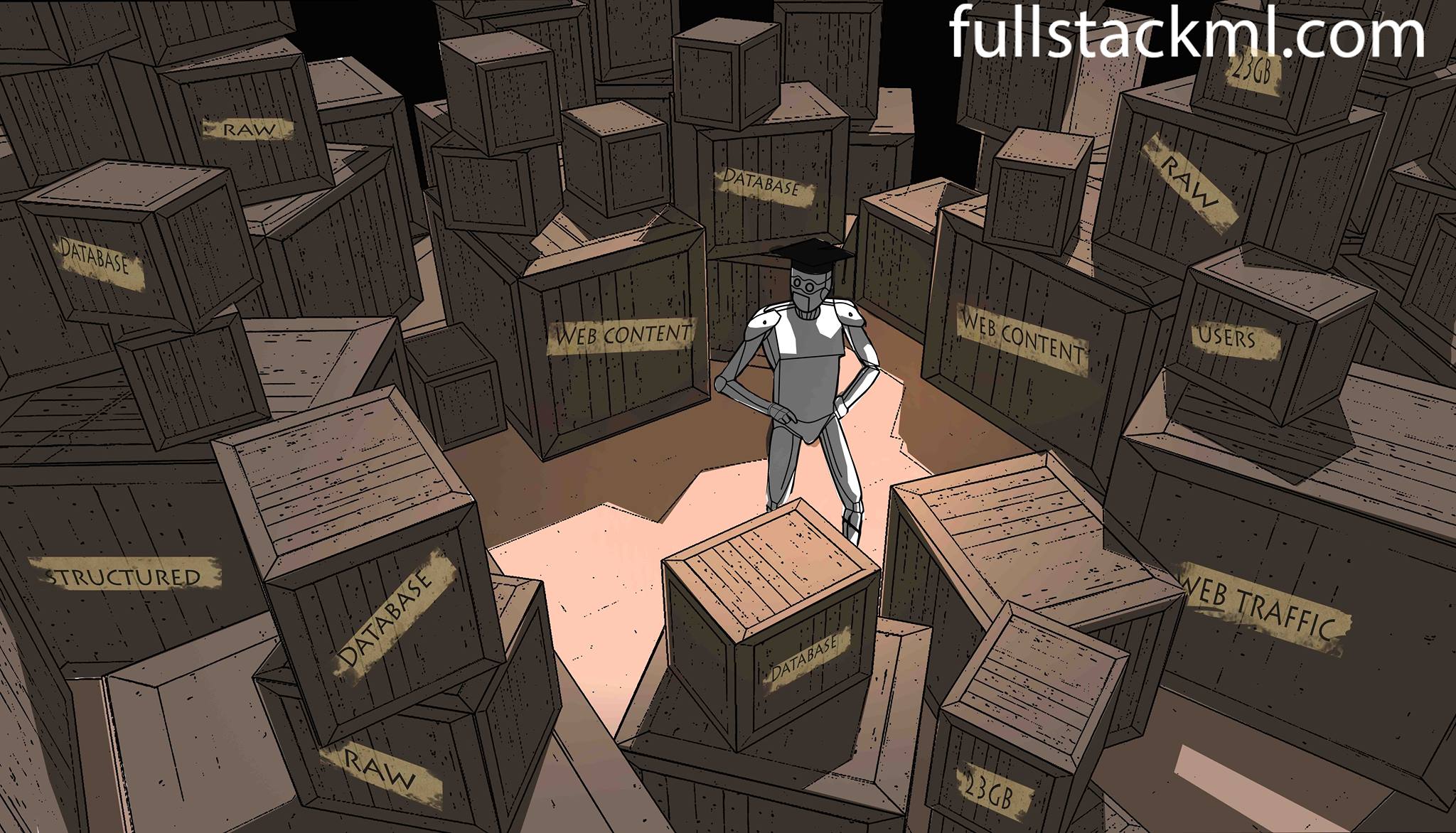What if you want to create a machine learning model but realized that your input dataset doesn't fit your computer memory? Usual you would use distributed computing tools like Hadoop and Apache Spark for that computation in a cluster with many machines. However, Apache Spark is able to process your data in local machine standalone mode and even build models when the input data set is larger than the amount of memory your computer has. In this blog post, I'll show you an end-to-end scenario with Apache Spark where we will be creating a binary classification model using a 34.6 gigabytes of input dataset. Run this scenario in your laptop (yes, yours with its 4-8 gigabytes of memory and 50+ gigabytes of disk space) to test this.

Choose dataset.
1. Input data and expected results
In the previous post we discussed "How To Find Simple And Interesting Multi-Gigabytes Data Set". The Posts.xml file from this dataset will be used in the current post. The file size is 34.6 gigabytes. This xml file contains the stackoverflow.com posts data as xml attributes:
- Title - post title
- Body - post text
- Tags - list of tags for post
- 10+ more xml-attributes that we won't use.
As you might expect, this small file is not the best choice for model training. This file is only good for experimenting with your data preparation code. However, the end-to-end Spark scenario from this article works with this small file as well. Please download the file fromhere.
Our goal is to create a predictive model which predicts post Tags based on Body and Title. To simplify the task and reduce the amount of code, we are going to concatenate Title and Body and use that as a single text column.
It might be easy to imagine how this model should work in the stackoverflow.com web site – the user types a question and the web size automatically gives tags suggestion.
Assume that we need as many correct tags as possible and that the user would remove the unnecessary tags. Because of this assumption we are choosing recall as a high priority target for our model.
2. Binary and multi-label classification
The problem of stackoverflow tag prediction is a multi-label classification one because the model should predict many classes, which are not exclusive. The same text might be classified as “Java” and “Multithreading”. Note that multi-label classification is a generalization of different problems – multi-class classification problem which predict only one class from a set of classes.
To simplify our the first Apache Spark problem and reduce the amount of code, let’s simplify our problem. Instead of training a multi-label classifier, let’s train a simple binary classifier for a given tag. For instance, for the tag “Java” one classifier will be created which can predict a post that is about the Java language.
By using this simple approach, many classifiers might be created for almost all frequent labels (Java, C++, Python, multi-threading etc…). This approach is simple and good for studying. However, it is not perfect in practice because by splitting predictive models by separate classifiers, you are ignoring the correlations between classes. Another reason – training many classifiers might be computationally expensive.





 雷达卡
雷达卡
















 提升卡
提升卡 置顶卡
置顶卡 沉默卡
沉默卡 变色卡
变色卡 抢沙发
抢沙发 千斤顶
千斤顶 显身卡
显身卡 Please let me know if you encountered any problem or had future questions. I would really like to hear your feedback.
Please let me know if you encountered any problem or had future questions. I would really like to hear your feedback. 






 京公网安备 11010802022788号
京公网安备 11010802022788号







